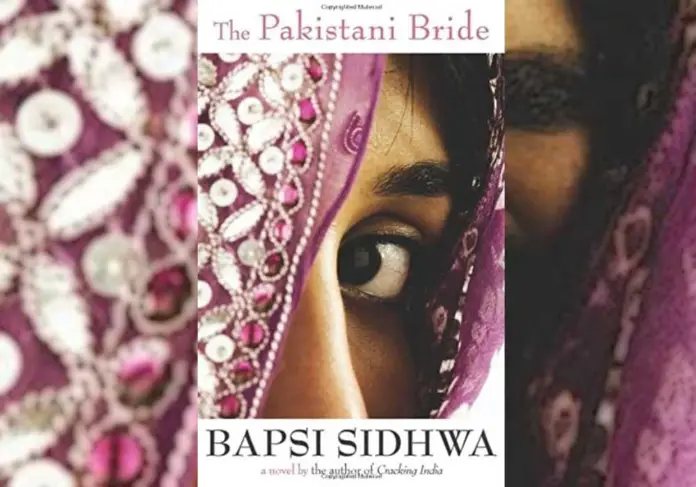The Pakistani Bride is a South Asian novel, written by the well-renowned novelist, Bapsi Sidhwa.
Sidhwa is a native of India. She has written four novels, namely ‘An American Brat’, ‘The Pakistani Bride’, ‘Ice Candy Man’, and ‘The Crow Eaters’.
“Bapsi Sidhwa is a powerful and dramatic novelist who knows how to flesh out a story.” (London Times)
“Bapsi Sidhwa’s The Pakistani Bride reveals to the western reader a way of life that is completely alien. Sidhwa writes with the same vivacity that made the authors first novel, ‘The Crow Eaters’ so memorable.”(Telegram)
The introduction of the ‘angrez’ Carol, later in the novel is symbolic of the different identities and beliefs of the East and the West.
The novel is a realistic portrayal of life in the mountains. It is a barbaric and cruel system. Qasim, was to be married soon, his father tells him. He is a young boy, and has no idea how to consummate a marriage, let alone, he doesn’t even have the confidence to unveil the bride.
He is married to Afshan. Qasim is nervous and thrilled at the same time. But he doesn’t know what he’s in for. As he lifts the veil, the bride is a woman! And Qasim is only a boy.
The incident points to the cruel and harsh traditions of the people of the mountains. It also shows how the men of the plains are effeminate and the mountain people are brazen.
The novel then shifts to horror of the 1947 partition. The bloodshed and violence were brutal. The central character at play, here are Sikander, Zohra and their child. They have to catch the train to Jalandhar. As they board the train, the author paints a picture of how cramped the train was. The stench of urine constricted the throat.
Qasim adopts a little girl Munni, who reminds him of his daughter Zaitoon. Who really is Munni is something I will not reveal.
Qasim is a man of the gun. But the softness and delicacy of emotion he feels towards Zaitoon is incomprehensible. How can a warring man be so compassionate? But isn’t this the paradox the novel is trying to resolve?
Zaitoon was now growing up. The hormonal tendencies of her body were changing and needed to be addressed. Miriam talked to Qasim, and both agreed she should not go to school now.
It is an old and futile custom. Preparing adolescents for such changes through school and education is important rather than making them feel guilty about it.
Parallel to the main story runs what life is like in Heera Mandi. Qasim and Nikka Pehlwan decide to visit Heera Mandi. The poverty, squalor, and filth foster a sense of pity and disgust in Qasim.
Qasim longs to go back to his homeland. He takes Munni with him. She is delighted to see the freshness of nature. It invigorates her.
Qasim sets up Zaitoon with Sakhi, who is a fierce and cruel tribal man. Zaitoon’s mother-in-law, Hamida is a kind woman, who protects Zaitoon from the wrath of Sakhi.
Zaitoon, tired of Sakhi’s constant nagging seeks refuge in the arms of the river.
Does Zaitoon leave Sakhi or is Sakhi triumphant in keeping her imprisoned?
Does the male have the power to torment the woman? Doesn’t the woman have a right to say something in her defense?
These are questions I leave for the reader to speculate upon.
The novel is realistic. It depicts the harsh realities of life with a touch of sugar and some salt.







